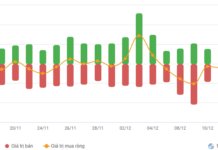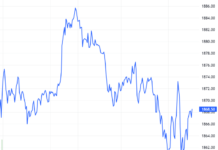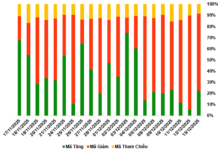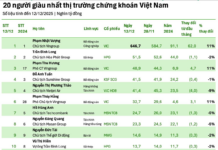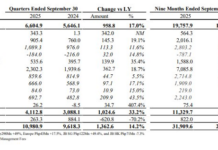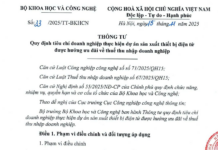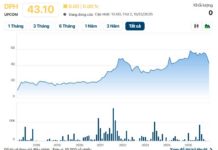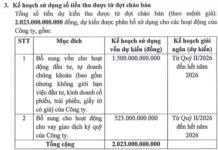Increase in orders
Mr. Nguyen Chi Trung, Chairman of the Board of Directors of Gia Dinh Group Corporation, a large company in the footwear industry, said that recently the company has received a series of orders from major partners worldwide and has orders until the end of June. This is rare in the past 2 years when the leather footwear industry has been going through a difficult period.
To meet the demand for export orders, at the company’s factories, workers are being called to work overtime for 5 days a week, with an additional 2-2.5 hours each day. According to Mr. Trung, in the difficult context, the company has made changes by focusing on expanding small markets and seeking new markets. “The company has also diversified its products and reduced dependence on orders from traditional customers. In particular, the company focuses on footwear products with average quality that have many supporting partners,” shared Mr. Trung.

Workers of ILA Company producing wooden products for export orders. Photo: Vietnam +
Representatives of Vietnam Garment and Textile Co., Ltd (Binh Xuyen District, Vinh Phuc) said that by now, the company has received orders until the third quarter of 2024. Since the beginning of the year, the company has exported nearly 1.4 million products, an increase of over 10% compared to the same period last year, creating new momentum and spirit for officials and workers to strive for development in this year.
Ms. Phan Thi Thanh Xuan, Vice Chairman cum General Secretary of Vietnam Leather – Handbag Association, said that by February 15, Vietnam’s footwear exports reached over 2.46 billion USD, an increase of over 16% compared to the same period last year. Companies are continuously recruiting workers to accelerate production after a period of reduction.
According to Ms. Xuan, at present, exports to major export markets such as the US, Europe, Japan, South Korea, and especially the Chinese market, are all growing. This is a very positive sign for the footwear industry after a period of facing “hungry” orders and a sharp decline in demand.
Aquatic products, forestry are booming
Meanwhile, the seafood sector after a period of fluctuating exports has begun to show signs of recovery. Mr. Ho Quoc Luc, Chairman of Sao Ta Food Joint Stock Company’s Board of Directors, said that this year both farm workers and company leaders celebrated Tet at the shrimp farm, as this is the first year the company has implemented the reversed season shrimp farming since the end of November 2023. This shrimp batch is raw material for processing export products this year. Therefore, entering the new year, the company’s processing plants are busy processing orders and workers have to work overtime continuously to prepare for export shipments.
According to statistics from the General Statistics Office, in February, Vietnam’s exports reached nearly 25 billion USD. For the first 2 months of the year, the export turnover is estimated to reach 59.3 billion USD, in which there are 4 export items worth over 5 billion USD, accounting for 52% of the total export turnover. Vietnam’s trade balance is estimated to have a surplus of 4.7 billion USD, an increase of 1.2 billion USD compared to the same period last year.
According to Mr. Luc, in January, the production of finished shrimp products of the company doubled compared to the same period last year, reaching 1,250 tons. Along with that, the volume of consumption of finished shrimp reached over 1,600 tons, equal to 145% compared to the same period last year. The overall sales of the company reached over 19 million USD, equal to 126% compared to the same period last year.
Ms. Tran Thuy Que Phuong, Chief Office of the Vietnam Association of Seafood Exporters and Producers (VASEP), said that in January, Vietnam’s seafood exports reached nearly 750 million USD, an increase of 64% compared to the same period last year. Major items have all experienced significant breakthroughs compared to the same period last year, including shrimp exports at 242 million USD, catfish at 165 million USD, tuna at 79 million USD, etc.
Regarding the market, according to the VASEP representative, China and Hong Kong are important markets for Vietnamese seafood (with a turnover of over 118 million USD, triple compared to the same period last year), followed by the US (with a turnover of 111 million USD), Japan, Europe, etc.
“With the shrimp industry, due to the impact of fluctuations in Europe, the Middle East, and high transportation costs, companies are focusing on exploiting the group of markets close to Vietnam such as Japan, South Korea, and China. So, although the global shrimp industry is still affected, Vietnam’s shrimp exports still have room for growth. As for catfish exports, the market is showing signs of optimism. Orders in January and February from companies are starting to thrive,” shared Ms. Phuong.
With such positive signals, right from the beginning of the year, VASEP representatives predict that seafood exports may start booming in the second half of the year, and the overall result for the year will increase compared to last year, reaching about 9.5 billion USD.
Poultry and forestry, main items, are also showing signs of growth. Mr. Tran Quoc Manh, Vice Chairman of the Vietnam Handicraft & Gift Association, said that inflation in 2 important markets, the US and Europe, has now decreased, and supply and demand are gradually balancing. In January alone, Vietnam’s wood and forestry exports reached nearly 1.5 billion USD, an increase of 72.5% compared to the same period last year. “There is a high possibility that the US and Europe will increase strong imports from the third quarter. This year, the wood industry set a target of exporting wood and wood products worth 17.5 billion USD,” Mr. Manh said.


